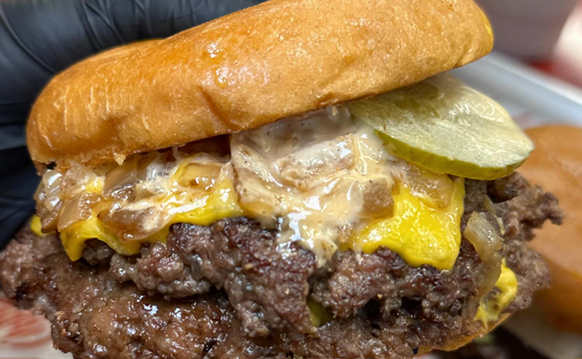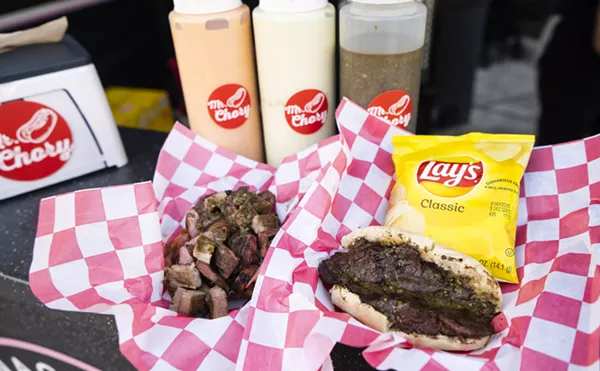If you've ever walked into your local Asian grocer and gasped for air, just wait until you get up close to a durian. Also known as "stink fruit," this exotic import can have an odor so offensive it's actually banned from most public places in Southeast-Asia, including hospitals, buses, trains and hotels.
See also:
- A Fruit so Stinky, It's Illegal
Even so, Clean Plate Charlie was intrigued enough to sample some fresh, cut straight from the spiked seed pod that resembles a giant pinecone on steroids. Eating it wasn't the hard part -- finding one was.
A seasonal fruit, durian are most readily available in the summer. We found ours at New Oriental Market in West Palm Beach where they have been selling last season's fruit for the past several months. Many purveyors will freeze the late harvest, the store owner tells us, and will thaw them before putting them out for sale. If you can't find the whole fruit, don't worry. It's likely many will carry frozen durian meat out of the pod, which is guaranteed to be just as stinky.
What Is Durian?
Known across southeast Asia as the "king of fruits," the durian tree produces a massive fruit native to Indonesia and Maylaysia, where it's harvested from late June through August. The fruit can grow up to 12 inches long, and six inches in diameter, with some weighing up to seven pounds. This durian cost 75 cents per pound, and sold for $13. Any you find stateside are most likely from Thailand, which has become a major exporter of the fruit in recent years. Durian are a great source of vitamins and minerals; it offers the entire B-complex, is rich in dietary fiber, and high in vitamin C, potassium, essential amino acids, copper, iron and magnesium.
How to Prepare Durian Fruit
The first step to eating a durian is to open its brownish-colored, thorn-covered husk. To crack the pod, look for a natural soft spot on the husk, take a knife, and make a small incision. You'll be surprised how soft the husk can get -- a gentle tug will pull it open. If it's not ripe enough, this method won't work, and you'll have to cut the husk open.
What Does Durian Taste Like?
Once you've cracked the pod in half you'll see the inside contains a soft, pudding-like flesh that -- depending on the type -- will range in color from pale yellow to red. If the fruit isn't too ripe, the smell won't be strong. It gets worse as the fruit ripens, however. Some people like it, comparing it to almonds (that's most the red-fleshed variety). More people liken it to rotten onions, raw sewage, bad fish and gym socks (that's this guy right here). So what does it taste like? The creamy, buttery, custard-like flesh has a very muted, mellow flavor. It's not too sweet -- but it's not sour or tangy, either.
How to Eat Durian
Durian is eaten many ways, and used to flavor a wide variety of savory and sweet dishes, including ice cream, pancakes and cookies. In Malaysia durian is used to make pulut bubur, a sweet durian mush or "porridge" that combines sugar and coconut milk served over sticky rice. In the Philippines it's made into a milk-based pastilla, or sugary cookie-like dessert. In Sri Lanka durian is served as roti where it's mashed into a pulp and served inside a thin, flat-bread tortilla. And in Vietnam, durian flesh is rolled in rice paper and dipped into an egg batter before being fried to make sau rieng chien gion, or crispy fried durian.
Or you can eat it straight up, like we did. Enjoy!
Follow @CleanPlateBPB










